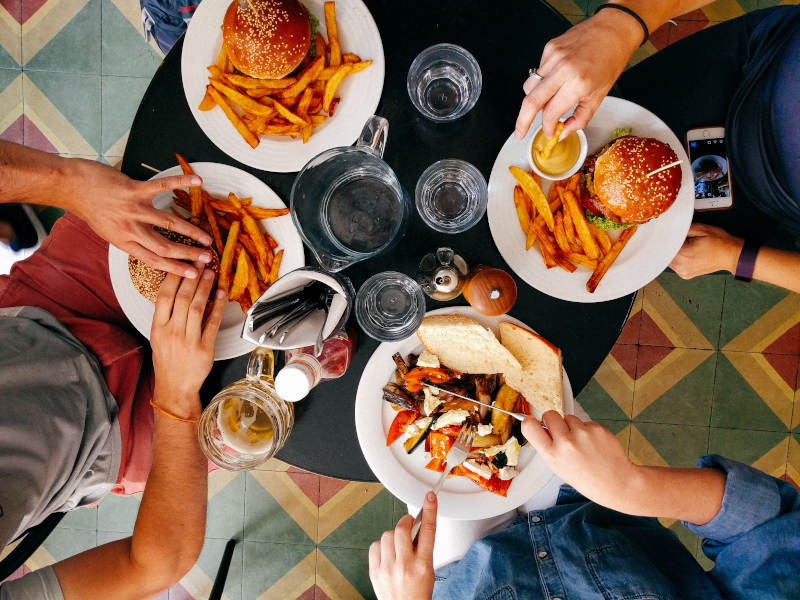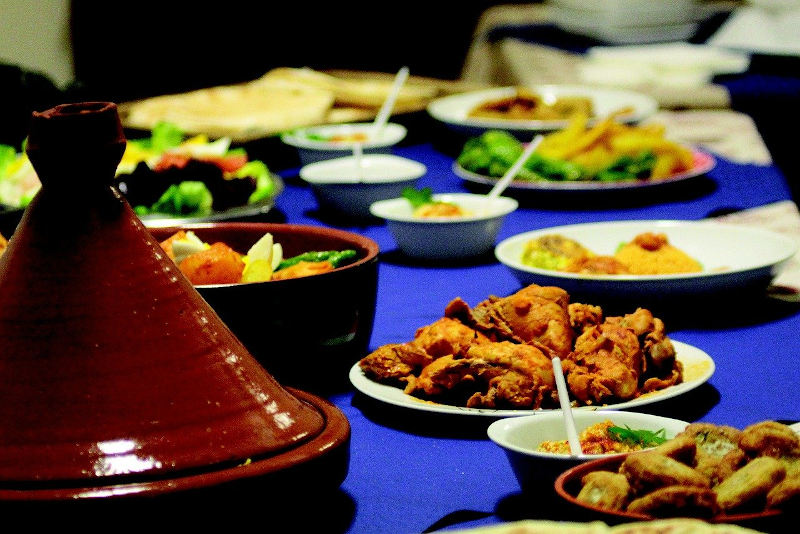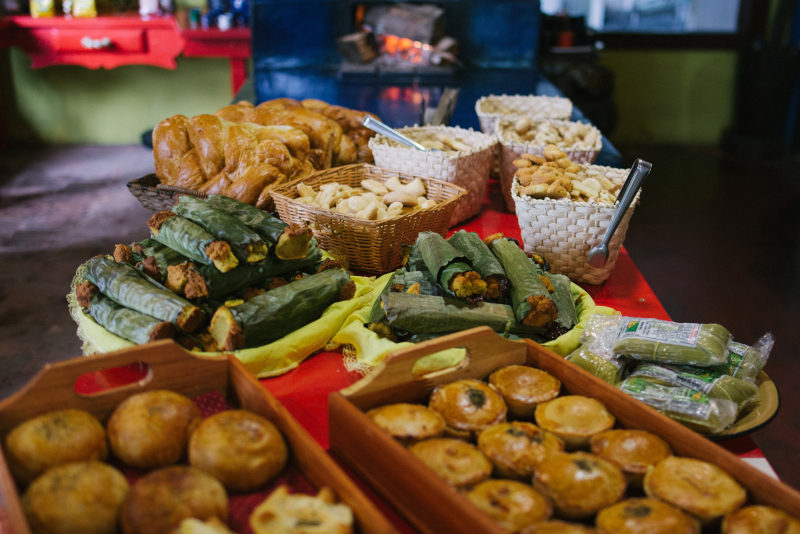
One of the most exciting parts of travelling and exploring a new country is getting to try all the delicious local dishes and culinary specialities. But did you know that exploring a country’s local cuisine can be a minefield of do’s and don’ts when it comes to table manners? What’s considered the height of politeness in one country may be seen as extremely ill-mannered in another country.
Don’t let this put you off trying exciting new dishes! Eating food and sharing a meal is one of the best ways to learn about another culture, and make friends with locals. With a little bit of preparation on table etiquette and cutlery etiquette, you’ll be ready to tuck in no matter where you are! Join us as we examine dining etiquette around the world.
Table etiquette in Africa:

Ethiopia
Cutlery etiquette is not common in Ethiopia, as most meals are eaten by hand. Remember to only use your right hand to eat, as the left hand is seen as unclean in many North African and middle eastern cultures. Food is shared and comes on a large plate placed in the centre of the table. Don’t reach across the plate for food on the other side, as it’s seen as bad table manners.
Morocco
Always make sure to wash your hands before dining in a Moroccan restaurant or house, as you will eat with your hands. Moroccan dining etiquette shares similarities with Ethiopia, as food is also dished from a communal plate, and you only eat with your right hand. If you are a guest and are full, continue to slowly nibble, as everyone sitting with you will stop eating too if they see you are done.
Egypt
In Egypt do not ask for salt and pepper if it’s not already on the table. It’s considered poor table manners to the person who has prepared the meal for you, as it implies they didn’t do a good job. Pouring your own drink to refill your glass is also frowned upon. Rather wait for someone to offer to refill your glass, and also offer to refill someone else’s glass.
Table etiquette in Asia:

China
The cutlery etiquette of China should always be followed, as knives and forks are not common. Spoons are usually used for soups. Never stick your chopsticks upright in your meal, as it’s considered bad luck. Rather lay your chopsticks over the bowl or plate. Burping after a meal is not considered bad table manners, but taken as a compliment that you enjoyed your meal.
Japan
In Japan, slurping your noodles or soup loudly is a common practice and is not offensive. Traditional customs for eating sushi dictate that mixing your wasabi in with your soy sauce is not correct, and will draw some confused stares from locals. Rather spread wasabi on the fish only, then dip the sushi into soy sauce. Like in China, never leave your chopsticks upright in a meal in Japan.
South Korea
Korean table manners are often centred around respect for the eldest person sitting at the table. Wait for the oldest person at the table to be seated before sitting down. Do not start eating when the food arrives, wait for the oldest person to begin eating, this is your cue! Be sure to eat slowly as it is considered rude to leave the table if an elder is still eating.
Table etiquette in Europe:

Italy
In Italy, never ask for extra cheese unless it is offered to you first. Adding extra cheese to a pizza or pasta dish is seen as poor table manners, and considered offensive to the chef’s culinary skills. Also, it’s not common dining etiquette to order a latté or a cappuccino after a meal, as milky drinks are believed to hinder digestion. Rather order an espresso or a black coffee like the locals do.
Hungary
In western culture, clinking your glasses and saying cheers when sharing drinks is polite and often expected. The exact opposite is the case in Hungary, where the local customs consider it highly impolite to cheers and clink glasses in public.
Russia
In Russian culture, it shows good table manners to keep your hands visible during a meal. It’s considered impolite to rest your hands on your lap, so keep them on the table. If you’re offered something to drink by either the host or anyone else always accept it, as Russian culture equates the sharing od drinks to friendship.
Table etiquette in Latin America:

Mexico
Cutlery etiquette is important in Mexico. The knife is held in the right hand and the fork in the left. Do not switch hands as it’s considered rude. The most important or honoured person will sit at the head of the table. Wait for your host to say “Buen provecho” (bon appetite) before beginning to eat.
Brazil
Dining culture in Brazil is influenced by European dining etiquette. Always use a knife, fork and/or spoon to eat your food. Never eat with your hands (this includes foods like hamburgers and french fries) as it’s considered unclean in Brazil. Bread must be picked up with a napkin to be eaten. Try to avoid making loud chewing noises as Brazilians consider it bad table manners.
Argentina
Table etiquette is considered very important in Argentine culture. If you are invited to a dinner party at someone’s house, always wait for the host to invite you to sit at your designated chair. Wait for the host to make a toast before taking the first sip of your drink. Keep your hands visible on the table and don’t begin to eat until your host invites you to do so.
That’s our list of table manners in different countries around the world. What other countries have a particular dining culture that we missed? What dining or cutlery etiquette do you like to observe at your table? Let us know in the comments below. We’d love to hear from you!
_______________________________________________________________________
Keep your wanderlust inspired with our list of 13 things we love about travel!
Discover the ins and outs of eco-adventuring with our guide to all you need to know about ecotourism!
Disclaimer!
All information on this page was correct at the time of publishing and may change at any time without prior notice. Travelstart will not be held liable for loss or inconvenience resulting from the use of out-dated or incorrectly noted information.

